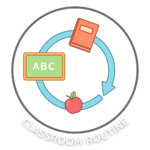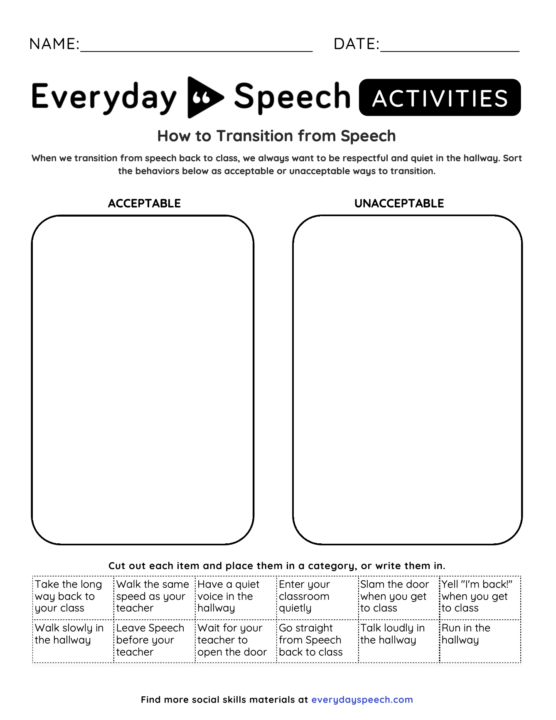
For many elementary students, transitioning between activities, especially from individualized settings like speech therapy back to a bustling classroom, can be daunting. As Speech Pathologists, we play a pivotal role in ensuring this transition is smooth, stress-free, and effective. Let’s delve into the Free How to Transition from Speech Worksheet – an innovative tool that simplifies this process and fosters understanding about appropriate transitioning behaviors.
Why Focus on Transitions?
Transitioning is more than just a physical shift from one space to another. It’s a mental adjustment that requires children to shift focus, reorient, and reintegrate into a different environment. Especially after a session of speech therapy, where students are in a focused, individualized setting, the sudden switch to a classroom can be jarring.
Breaking Down the How to Transition from Speech Worksheet
Our worksheet is designed as a sorting activity. On one side, there are behaviors that are conducive to a smooth transition. On the other, behaviors that might be disruptive or counterproductive. The goal? To help students identify and internalize these behaviors.
Lesson Plan: Ensuring Smooth Transitions
Objective: By the end of the lesson, students will be able to distinguish between appropriate and inappropriate behaviors when transitioning back to class from speech therapy.
Duration: 25 minutes
- Introduction (5 minutes)
- Initiate a conversation about the feelings students experience when moving from speech therapy back to class.
- Introduce the Free How to Transition from Speech Worksheet as a guide to make this process smoother.
- Worksheet Walkthrough (5 minutes)
- Display the worksheet and discuss the concept of sorting behaviors.
- Highlight a couple of examples from both categories.
- Activity Engagement (10 minutes)
- Distribute the worksheets and let the students begin sorting.
- Walk around, offering guidance and clarifications where needed.
- Discussion and Feedback (5 minutes)
- Talk about the findings. Which behaviors were surprising? Which ones are they already good at?
- Emphasize the importance of maintaining positive behaviors and working on the areas of improvement.

The Role of the Speech-Language Pathologist
While the worksheet offers a structured way to approach the transition, the insights and support from an SLP can truly make the difference. Offering personal anecdotes, real-life examples, and even practicing transitions can embed the learning deeper.
In Conclusion
The Free How to Transition from Speech Worksheet serves as an excellent tool in the hands of both educators and students. It not only makes transitions smoother but also paves the way for self-awareness and behavioral improvements.
Sample Video
Students learn best from watching real students their own age model skills. Try out this sample video-modeling lesson below. We offer our entire Social-Emotional Learning platform free for 30 days here!
Related Blog Posts:
Helping Students Adapt to Change: Switching Tracks for a Calm Transition
Transitioning to New Activities: Strategies for Educators
Transitions in Special Education: Activities and Strategies for Success





